LEGO Icons 10341 NASA Artemis Space Launch System review
LEGO Icons 10341 NASA Artemis Space Launch System blasts off from Billund, but where does it stack up in the growing pantheon of NASA-inspired 18+ sets? Let’s find out…
Few partnerships have ignited the imaginations and collective curiosity of generations quite like LEGO and NASA. Their collaborative history is not just a tale of toy-making, but a narrative of shared dreams, innovation, and boundless inspiration. Their latest offering, LEGO Icons 10341 NASA Artemis Space Launch System, stands over 70cm tall, recreating in brick form one of the most important spaceships NASA has designed and built in the last 40 years.
In 2022 Artemis 1 completed the first of five planned missions ultimately intended to send humans back to the moon. With a thrust of a staggering 4 million kilograms, it’s the most powerful rocket ever constructed by NASA and the Orion spacecraft (that the Space Launch System rocket carries into outer space) has flown the furthest of any vehicle designed for humans.
In September 2026 NASA plans to send four astronauts to our celestial neighbour, including the first woman and first person of colour to step foot on the moon. However, NASA plans to go further than man has ever been before, eventually hoping to successfully land an Artemis mission on the distant red planet of Mars. If that doesn’t fire up the imaginations of builders young and old, nothing will.
There are many stages to Artemis’s journey, all of which are detailed within the manual and of course faithfully recreated throughout the model. And as the designers explain, a little bit of LEGO ‘rocket science’ was needed in order to not only translate the look of the rocket and launch tower, but also all its functionality. The big question is, did they pull it off? There’s only one way to find out: strap yourself in and get ready to blast off.
— LEGO Icons 10341 NASA Artemis Space Launch System details —
Theme: LEGO Icons Set name: 10341 NASA Artemis Space Launch SystemRelease date: May 15, 2024
Price: £219.99 / $259.99 / €259.99 Pieces: 3,601 Minifigures: 0

— Where to buy LEGO Icons 10341 NASA Artemis Space Launch System —
LEGO Icons 10341 NASA Artemis Space Launch System will be available to buy exclusively at LEGO.com and in LEGO Stores from May 15 for LEGO Insiders, and May 18 for everyone else. It may then end up at a third-party retailer a few months later.
— LEGO Icons 10341 NASA Artemis Space Launch System build —
10341 NASA Artemis Space Launch System will see fans building the launch tower, rocket and Orion spacecraft using 3,601 parts spread across 27 numbered bags. The manual contains a wealth of information about the Artemis missions, as well as insight from the designers into the challenges faced when designing such a large set.
Considering how much modern LEGO engineering has gone into the design of this set, the build begins by feeling like a surprisingly classic LEGO experience. There are no Technic elements in the early stages (later it’s a slightly different story) and as the foundations of the launch tower are constructed, the techniques remain very straightforward.
That’s not to say that it’s any less enjoyable and there are pockets of clever design on display even in these early stages. Micro building techniques are employed throughout the base of the launch platform, recreating stairs, ladders, pipe work and other areas of interest. Unlike the real launch pad though, these have been left partly exposed to allow the interior details to be seen.
For a set that contains over 3,600 pieces, the first 10 bags come together surprisingly quickly. Experienced builders will easily have these done within an hour and a half, if not less. Simple yet smart construction using classic parts creates an almost nostalgic feeling during the early stages, leading to a very pleasant experience. It seems that this nostalgia hasn’t gone unnoticed by the designers either, as there is a very clear nod to LEGO history in one of the hidden Easter eggs – no spoilers here, but it’s made clear within the manual.




This is by no means a set that just relies on classic techniques; far from it. There are some really interesting design elements spread across the whole model. Once you begin adding the details to the launch pad you’ll soon find some very unique techniques at play. Some sub-assemblies are sandwiched together and then slotted into various holes and spaces, while others are left seemingly floating in mid-air, connected by just a few studs.
Of course with a set this size it’s to be expected that there will be a fair amount of repetition. Eighty-eight tap pieces are used for the launch pad’s safety barriers alone, and the entire launch tower has a very symmetrical design, which obviously requires the same building techniques to be employed over and over again.
It’s something of an exercise in patience and, as anyone who has built 10307 Eiffel Tower will know, constructing the same elements of a giant tower over and over again can become a little repetitive. However, once finished and with all the details added, using a lot of Technic bars and lightsaber hilts to recreate all the launch pad’s piping work, the tower looks very imposing and equally impressive.
Surprisingly, the parts needed for the Space Launch System rocket and the Orion spacecraft are only spread throughout the last five bags. That’s 20 bags dedicated to the launch pad, and just five for the rocket.




The rocket itself comes together fairly quickly too. A Technic core to which sub assemblies are attached make up the four sides of the main rocket. The dark orange and bright orange colour scheme is both accurate and striking, and interestingly enough also serves a practical purpose – at least on the real-life rocket. Orange is the colour of the insulation foam that helps keep the rocket’s propellant cool. The foam actually reacts to sunlight, and so the brighter the orange, the thinner the insulation.
Similar to the launch pad, technic bars are also used to replicate piping and cables. On the real life core stage of the rocket, there are 562 different pipes and cables totalling a staggering 72km. The engine alone contains over 230 cables. Thankfully, we don’t have to attach that many here, but what we do add to the rocket provides a fine level of detailing.
Stickers are also used to add further details to the exterior of the Artemis rocket. For the main part these are fine, but a few of them are only 1×1 in size and are incredibly tricky to apply. There are a lot of larger printed pieces used for the boosters and so it was possibly too expensive to print these elements too, but it would have been far less fiddly had they been printed parts instead – tweezers are definitely recommended.




The booster rockets on either side look excellent though and are cleverly designed. A mix of round parts, bricks, white buckets and Technic elements are combined to great effect. The way they connect to the main fuselage is extremely smart, seamlessly hiding the connection behind a number of curved Technic pieces. Both stickers and printed parts are used for the detailing on the boosters, and while you’ll need a lot of concentration to line up the stickers, it’s worth it as it looks excellent and is incredibly satisfying getting the look just right.
The final stage of the build focuses on the Orion spacecraft that is housed inside the much larger rocket. It’s a neat little build that folds up compactly to fit inside the tip of the rocket. It can either be placed on a separate display stand next to the final model, or left inside. Finishing off the model is a small stickered display plaque.
The completed model is large, impressive and faithfully recreates the launch tower and Space Launch System rocket, and despite the repetition while constructing the launch tower, the build is overall engaging and rewarding.
— LEGO Icons 10341 NASA Artemis Space Launch System characters —
There are no minifigures included within this set. It doesn’t need one, but perhaps an updated and official NASA astronaut figure would have looked great placed on the display plaque next to the final model. If you want to add your own, you could always grab the Spacewalking Astronaut in 71046 Series 26 Space, which is available now (don’t forget to use Brick Search to help find one!).
— LEGO Icons 10341 NASA Artemis Space Launch System price —
While there are over 3,600 pieces included in 10341 NASA Artemis Space Launch System and the final model is incredibly impressive (not to mention pretty huge), there’s just something about the completed set that feels a little bit lacking. The build predominantly focuses on the launch tower while the rocket and Orion spacecraft are something of a side note to the whole experience.
While including the entire launch tower and recreating the whole Space Launch System (not just the rocket) is an admirable level of ambition, the final model just doesn’t feel as imposing as the LEGO Group’s previous large-scale rocket, 92176 NASA Apollo Saturn V. The scale of the Apollo rocket captures the imagination more than the rocket included with this set and as impressive as the tower is, once you take away the rocket from the model, you’re effectively just left with a very large scaffold.
Even with that piece count in mind, this would have felt better value at £20 / $30 less than its current asking price. As it stands, 10341 NASA Artemis Space Launch System feels slightly too expensive for what you actually get.
— LEGO Icons 10341 NASA Artemis Space Launch System pictures —
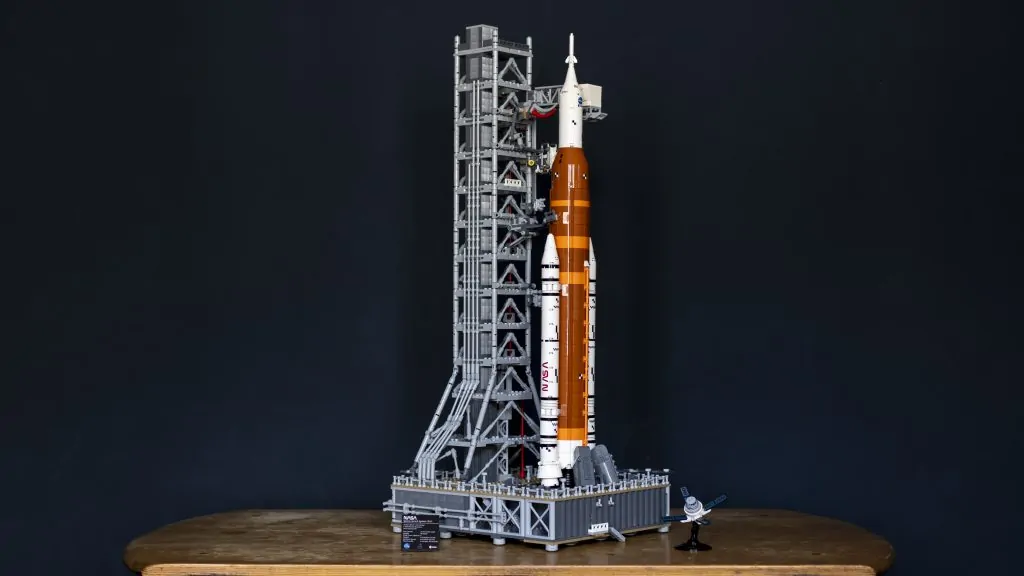













































— LEGO Icons 10341 NASA Artemis Space Launch System pros and cons —
Standing tall and commanding attention, 10341 Artemis Space Launch System captivates with its impressive scale and attention to detail. Yet in comparison to LEGO City 60351 Rocket Launch Centre, there emerges a subtle distinction in overall presentation.
While the grandeur of 10341 is undeniable, 60351 offers a more complete experience. The Rocket Launch Centre presents a bustling scene, with additional vehicles, structures and minifigures, evoking the vibrant atmosphere of a rocket launch. In contrast, 10341 could have benefited from supplementary elements to enhance the sense of scale and activity surrounding the launch pad.
Nevertheless, LEGO Icons 10341 NASA Artemis Space Launch System stands as a remarkable testament to human exploration of the cosmos. Whether you are a seasoned LEGO builder or a fervent space enthusiast, this set is bound to impress. With minor adjustments to enrich its surroundings, it holds the potential to become an even more immersive and awe-inspiring model.
| LEGO Icons 10341 NASA Artemis Space Launch System pros | LEGO Icons 10341 NASA Artemis Space Launch System cons |
|---|---|
| Impressive scale and presence | It’s a relatively static display model |
| Eye-catching display piece (and great conversation starter) | Just a little bit too expensive considering the volume of stuff |
| Enjoyable building experience on the whole… | …but slightly (and inevitably) repetitive in places |

This set was provided for review by the LEGO Group.
You can support the work that Brick Fanatics does by purchasing your LEGO using our affiliate links – thank you.
— Alternatives to LEGO Icons 10341 NASA Artemis Space Launch System —
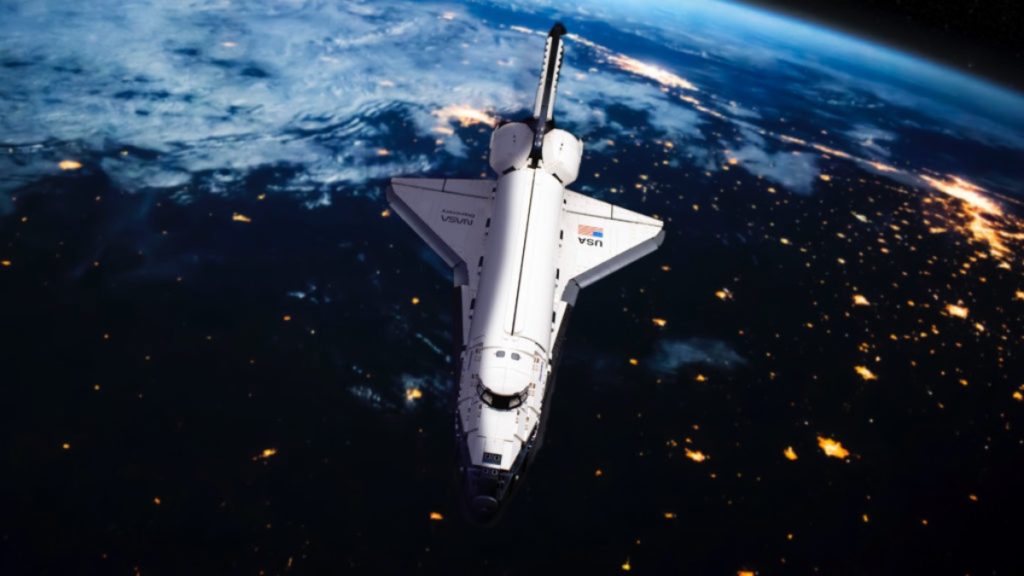
The LEGO Group has gone all-out with its space-inspired sets this year, releasing a whole galaxy’s worth of models across a number of well-loved themes. There are plenty of fantastic sets to choose from but our number one recommendation if you are looking for an alternative to 10341 NASA Artemis Space Launch System is the equally stunning and well-designed LEGO Icons 10283 NASA Space Shuttle Discovery. It’s hard to find, but currently still available at LEGO.com.
— LEGO Icons 10341 NASA Artemis Space Launch System FAQs —
How long does it take to build LEGO Icons 10341 NASA Artemis Space Launch System?
LEGO Icons 10341 NASA Artemis Space Launch System is a large and impressive looking model. The build is an incredibly enjoyable experience and will probably take anywhere from six to eight hours to complete, if not more.
How many pieces are in LEGO Icons 10341 NASA Artemis Space Launch System?
Fully constructing the launch pad, the Space Launch System rocket and the Orion spacecraft will require 3601 parts.
How big is LEGO Icons 10341 NASA Artemis Space Launch System?
LEGO Icons 10341 NASA Artemis Space Launch System is an impressive and imposing model. It’s tall, but does not actually take up too much space thanks to the base only standing 30cm wide. You’ll need to leave a lot of headroom though as the total height is 70cm.
How much does LEGO Icons 10341 NASA Artemis Space Launch System cost?
LEGO Icons 10341 NASA Artemis Space Launch System will touch down in stores on May 15 for LEGO Insiders (and May 18 for everyone else) and retails for $259.99 across North America, £219.99 in the UK and €259.99 in mainland Europe.
Author Profile

- I have more than 20 years in television production and photography and can finally put all that experience to good use by combining it with my number one passion in life, LEGO! I love all things brick-related, but the theme that really floats my boat is the original LEGO Pirates range. I currently have a LEGO wishlist that far outstretches my shelf space... and bank balance!
Latest entries
July 2024 sets14/06/2024LEGO Icons 10337 Lamborghini Countach 5000 Quattrovalvole review
May 2024 sets02/05/2024LEGO Icons 10341 NASA Artemis Space Launch System review
March 2024 sets23/04/2024LEGO Technic 42181 VTOL Heavy Cargo Spaceship LT81 review
March 2024 sets17/04/2024LEGO Technic 42179 Planet Earth and Moon in Orbit review

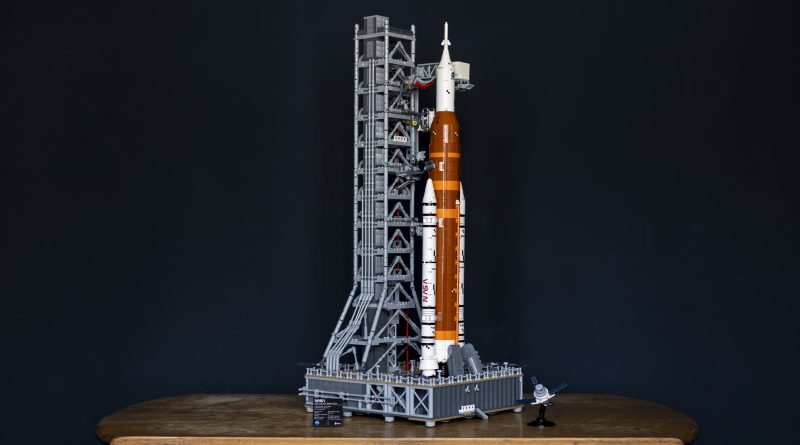

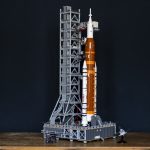
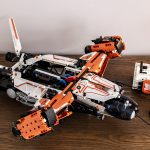


While I agree with the tower overshadowing the rocket, it’s kinda how it should be. Can you imagine if there was a tower for the Saturn V. To make the Saturn V even smaller, imagine if there was a VAB to put it in!
Great review! Just a note though. In the article it says that “With a thrust of a staggering 4 million kilograms, it’s the most powerful rocket ever constructed by mankind.” This is inaccurate, as the SpaceX Starship is over twice as powerful. Hope this is fixed!